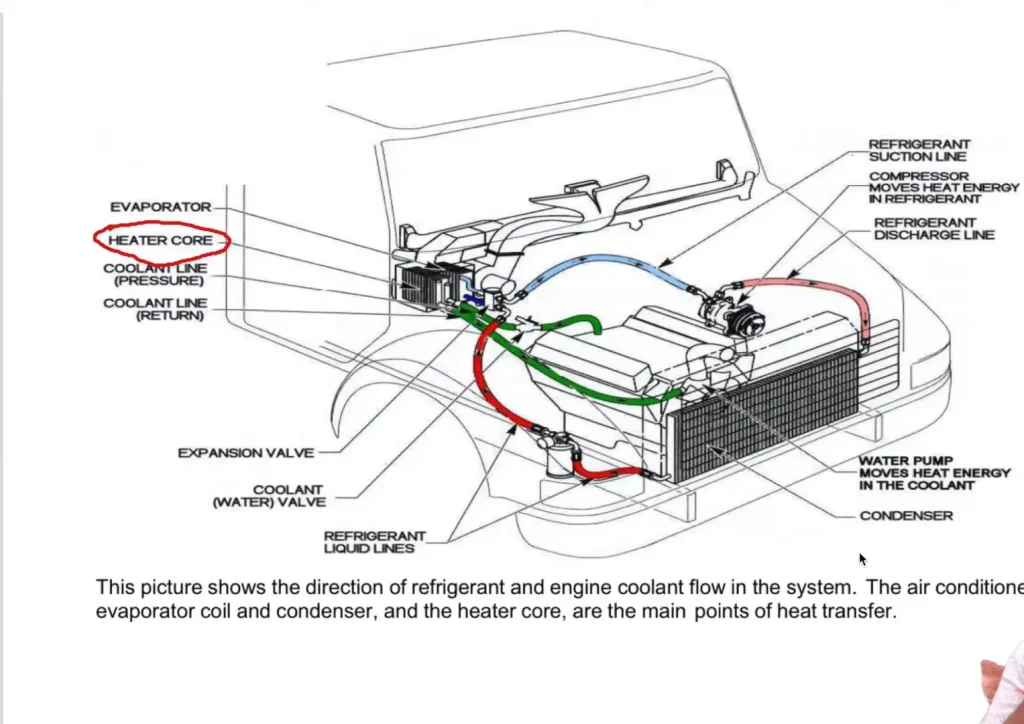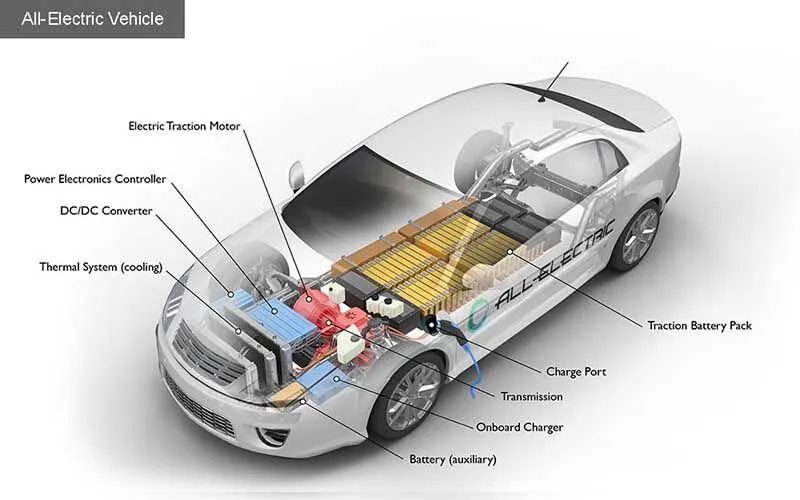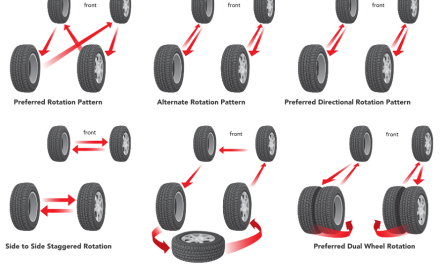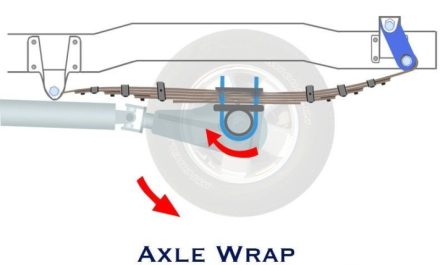Introduction
It is important to layer up during keen weather and for the drivers, it is crucial to have an insight of how the car heater works. A car heater is not just another vent on the dashboard but a three-part mechanism that warms the interiors using heat from the car engine. In this guide, you will learn about each stage of how a car heater works and the necessary components required for the car heater to work When in operation, you might discover it has some issues or you may need to know how to maintain the car heater to ensure it’s functioning as it’s supposed to.
What is a car heater?
A car heater is a device that warms the interior of a car using heat produced by the engine. This system channels hot air into the cabin to keep occupants warm during cold weather. The car heater is designed to balance engine heat by circulating it within the vehicle using different parts like the heater core, blower motor, and thermostat.
Understanding the Basics of Car Heating Systems
Heating is as fundamental as the cooling system of your car; it is part of the overall engine cooling system and at the same time is a source of heat for the car interior. This system’s major element is the heater core, which is yet another radiator in size and is fitted at the rear of the dashboard. In that way, hot air is generated for the interiors of a car as the hot air is blown usually by an available blower fan.
- Heater Core: The heater core is a small radiator-like device that transfers heat from the engine’s coolant to the air that is blown into the cabin.
- Heater Hoses: These hoses carry the hot coolant from the engine to the heater core and back again.
- Heater Blower: The heater blower is a fan that circulates the heated air from the heater core into the cabin.
- Heater Control Valve: This valve regulates the flow of coolant to the heater core, allowing you to control the temperature of the air being blown into the cabin.
How the Heating System Works
The way your car’s heating system works is simple enough for you to understand. These fluids circulate in the engine’s chambers and when the engine is running it heats them with the intention of spreading the heat to the engine coolant. The hot coolant also turns and passes through the heater core, and heat is transferred over the air blown into the cabin by the heater blower.

The process can be broken down into the following steps:
- The engine’s cooling system circulates hot coolant through the heater core.
- The heater blower fan draws air across the heater core, where the heat from the coolant is transferred to the air.
- The heated air is then blown into the cabin, providing warmth to the occupants.
- The coolant, now slightly cooler, returns to the engine to be reheated and the cycle continues.
The temperature of the air being blown into the cabin can be controlled by adjusting the heater control valve, which regulates the flow of coolant to the heater core. This allows you to fine-tune the cabin temperature to your desired level of comfort.
The Importance of Warming Up Your Car
While it may be tempting to jump in your car and hit the road as soon as you start the engine, it’s crucial to allow your vehicle to properly warm up before driving. This is especially true during the colder months when the engine and other components are working harder to reach their optimal operating temperature.
Letting your car warm up serves several important purposes:
- Engine Lubrication: When the engine is cold, the oil is thicker and less effective at lubricating the moving parts. Allowing the engine to warm up ensures that the oil has thinned out and can properly lubricate the engine, reducing wear and tear.
- Emissions Reduction: Cold engines tend to produce more emissions, as the catalytic converter is not yet at its optimal operating temperature. Warming up the engine allows the catalytic converter to reach its ideal temperature, reducing harmful emissions.
- Fuel Efficiency: A cold engine requires more fuel to operate efficiently. Allowing the engine to warm up before driving can improve your fuel economy, saving you money at the pump.
- Cabin Comfort: Warming up the engine ensures that the heating system can effectively heat the cabin, providing a comfortable environment for you and your passengers.
Most automobile gurus advise that you let your car warm up for at least 30 seconds to a minute but this depends on some factors like the external climate and the particular car model you are driving. It is equally important to warm up your car – not only will you double the engine’s life, but you will ensure a comfortable and efficient trip each time.
Troubleshooting Common Heating System Issues
While car heating systems are generally reliable, they can occasionally experience issues that can affect their performance. Here are some common problems and their potential causes:
Insufficient Heating
If your car’s heating system is not providing enough warmth, it could be due to one of the following issues:
- Low Coolant Level: If the coolant level in the system is low, there may not be enough heat being transferred to the heater core, resulting in insufficient cabin heating.
- Faulty Heater Core: Over time, the heater core can become clogged or damaged, reducing its ability to effectively transfer heat to the cabin air.
- Thermostat Malfunction: A stuck or faulty thermostat can prevent the engine from reaching its optimal operating temperature, limiting the amount of heat available for the heating system.
- Blower Fan Issues: If the blower fan is not working properly, it may not be able to circulate the heated air into the cabin, resulting in poor heating performance.
Inconsistent or Fluctuating Heating
If the temperature in your car’s cabin is inconsistent or fluctuates, it could be due to the following problems:
- Leaks in the Cooling System: Coolant leaks can cause the system to lose pressure, leading to inconsistent heating as the coolant flow is disrupted.
- Faulty Heater Control Valve: A malfunctioning heater control valve can cause the flow of coolant to the heater core to be erratic, resulting in uneven heating.
- Air Pockets in the Cooling System: If there are air pockets trapped in the cooling system, it can prevent the heater core from receiving a consistent flow of hot coolant, leading to fluctuating cabin temperatures.
No Heating at All
If your car’s heating system is not providing any warmth at all, the issue could be one of the following:
- Coolant Circulation Failure: If the coolant is not circulating through the system, the heater core will not receive any hot fluid, resulting in a complete lack of heating.
- Electrical Issues: Problems with the wiring, fuses, or other electrical components in the heating system can prevent the blower fan or other critical components from functioning, leading to a total loss of heating.
- Heater Core Blockage: A complete blockage in the heater core can prevent any hot coolant from passing through, effectively shutting down the heating system.
If you encounter any of these heating system issues, it’s important to have your vehicle inspected by a qualified mechanic as soon as possible. Ignoring these problems can lead to further damage and more costly repairs down the line.
Maintaining Your Car’s Heating System
To ensure your car’s heating system continues to function at its best, it’s important to perform regular maintenance and inspections. Here are some key steps you can take to keep your heating system in top shape:

Coolant Maintenance
The coolant level used in automobile heating systems is one of the most important components that needs to be checked and known on a regular basis. Depending on your car worker’s advice, fill the coolant of the appropriate type in the recommended concentration level. Also, the coolant through the required interval to minimize impurities that can block the system relocation.
Hose and Clamp Inspection
Carefully inspect the heater hoses and clamps for any signs of wear, cracks, or leaks. Damaged or loose hoses can cause coolant leaks, which can disrupt the flow of hot fluid to the heater core. Replace any worn or damaged hoses and ensure that all clamps are tightened securely.
Blower Fan Maintenance
Because it is in charge of circulating the heated air into the cabin, the heater blower fan needs to be kept in good working order. Check the blower fan periodically for debris or obstructions that might interfere with its operation, and have it inspected by a mechanic if you observe any problems.
Thermostat Replacement
The thermostat plays a crucial role in regulating the engine’s operating temperature, which in turn affects the performance of the heating system. Over time, the thermostat can become stuck or fail, preventing the engine from reaching its optimal temperature. Replace the thermostat at the recommended intervals to ensure your heating system is functioning at its best.
Regular Inspections
During routine maintenance, it is a good idea to have a qualified mechanic check your car’s heating system. They can check for any signs of wear or damage, and identify any potential issues before they become more serious problems. This proactive approach can help you avoid unexpected breakdowns and ensure your heating system provides reliable warmth throughout the colder months.
Conclusion
The car heater is one of the luxurious features of your car which makes you comfortable when you are driving during the cold season. In understanding how it works, from the heat generated by the truck’s engine to the circulation of warm air throughout the vehicle, then you come to the ability to identify some of the most common problems affecting its efficiency and how to address them. Simple maintenance checks and quick fix means that your car heater is in good shape and the winter driving conditions are more bearable.
Frequently Asked Questions
Q1. Why is my car heater blowing cold air?
- Your car heater may blow cold air due to low coolant levels, a faulty thermostat, or an air bubble in the cooling system.
Q2. How long does it take for the car heater to start blowing hot air?
- The heater starts blowing warm air within 5-10 minutes as the engine warms up. In colder weather, it may take slightly longer.
Q3. Can a car heater work without the engine running?
- No, car heaters rely on the engine’s heat. However, some electric cars have independent heating systems.
Q4. Why does my heater have a burnt smell?
- A burnt smell may be caused by the dust in the heater core or an electrical problem in the blower motor. If this continues, then it would be wise to bring your car to the mechanic for diagnosis.


